By Pete Vack
A significant portion of the new book, Ballot, is comprised of chapters by Karl Ludvigsen. In “The Technology of the Ballot Grand Prix Engines,” and probably for the first time in text, he provides a history of the early development of the racing straight eight engines (while acknowledging the importance of William M. Gardner’s Encyclopedia of Eights).
He then describes the features of the Ballot eight- and four-cylinder racing engines. In Volume 2, Ludvigsen expounds on the nature of the Ballot Legacy.
The Henry/Ballot Legacy
While Griff Borgeson’s research focused on the development and influence of Henry’s exciting and glamorous (at least in an engineering sense) DOHC four valve head as used on both the 1913 four-cylinder Peugeots and the post-World War I Ballots, Karl Ludvigsen looks at the Ballot legacy from another perspective, the straight eight initiative.
In writing of the influential 1919 Henry Ballot, Borgeson commented, “But it was the use of eight vertical cylinders in line which smote layman and engineer alike.”* However, Griff went nowhere with the statement, concentrating instead on the penthouse rather than the basement. For the Ballot book, Ludvigsen picked up on Griff’s aside to show us that indeed, the 1919 Ballots were influential in more ways than just the head design…after all, the 1913 Henry Peugeots had been dissected and copied for their head design before the war. It was the use and development of the straight eight engine that most impressed others.
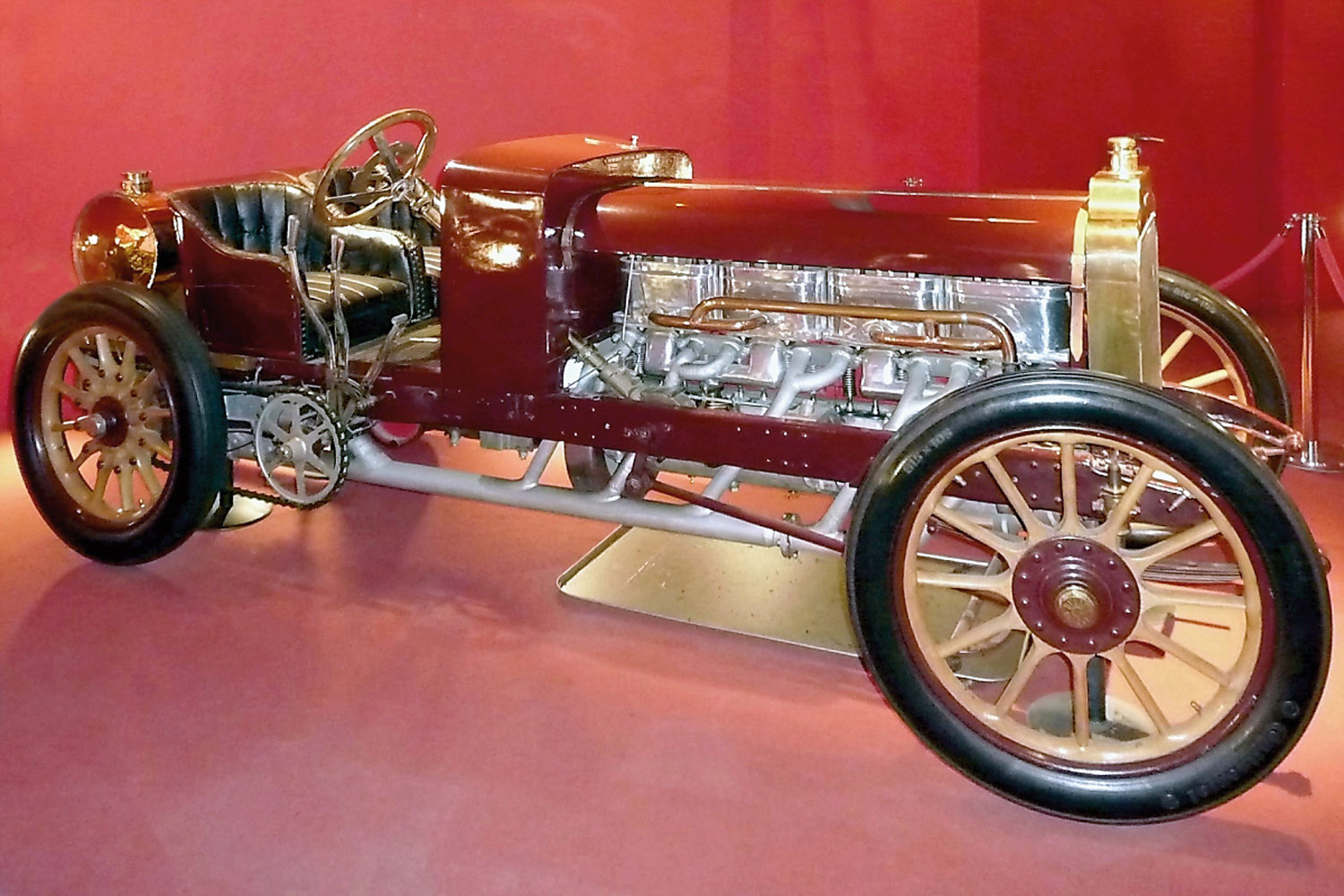
One of the first to try to build a racing straight eight were the Dufaux brothers from Switzerland. A 26-liter displacement meant large pistons and a long engine. One of two examples to survive, this one is in the Musée National de L’Automobile.
On the surface, it doesn’t seem that a simple straight eight was an important legacy. But historically, straight eight engines were problematic. Most attempts at assembling a straight eight used two fours in a variety of layouts, and here, Ludvigsen establishes the 1903 CGV as the first straight eight engine. (Historians normally attribute the first “pure” straight eight to the 1904 Dufaux, which created quite a stir in the press.) While the eights were easier to balance than a six, the length was a liability in terms of both crankshaft lash, race car chassis space, and getting enough lubrication to the main bearings. As displacements and therefore bores were dramatically reduced by 1914, the length of a straight eight became more manageable. Furthermore, by war’s end, it was determined that the multi-piston formula held the key to even higher rpm and therefore more horsepower. The dominant, trusty four would have to go.
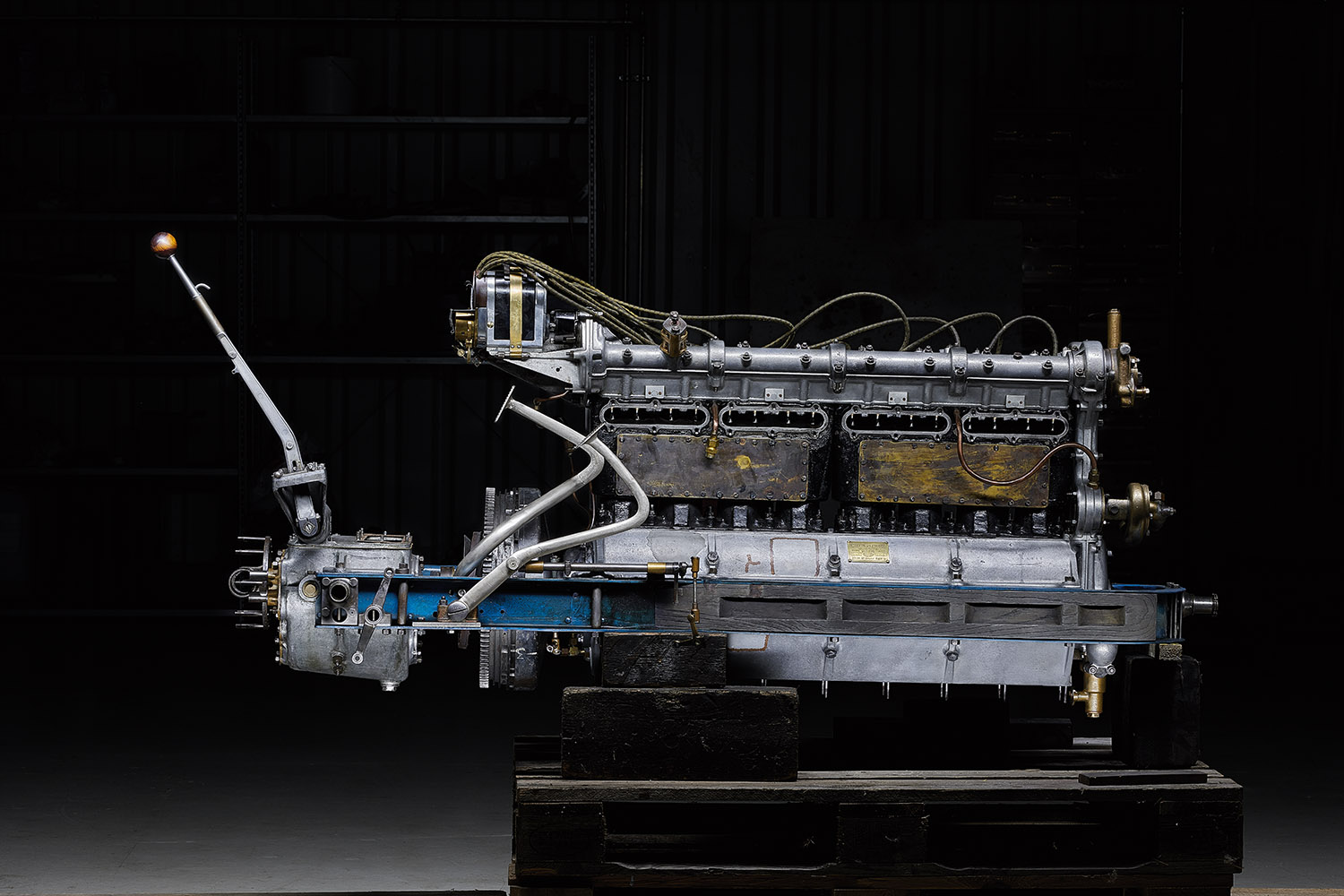
The elegant, yet internally complex Ballot straight eight. The length was reduced due to small diameter pistons, as well as the use of ball bearing mains, which are normally thinner than an equivalent plain main bearing.
Ludvigsen notes that the merits of the straight eight were well understood by Henry. He then quotes from an article in the May 7, 1921 edition of the Autocar, in which W.F. Bradley wrote about the advantages of the straight eight.
“M. Henry is of the opinion that a higher effective pressure can be obtained in the small than the large cylinder. Also his practical experience shows that the eight can be made to run much faster than the four of equal piston displacement.” Henry also told Bradley that a six-cylinder design has vibration and carburation problems, so the logical choice was the straight eight.
Henry, of course, new this well before 1919 and was the first to be able to take advantage of the racing straight eight. Ludvigsen highlights two race car manufacturers that were influenced by the Ballot straight eight initiative, Miller and Sunbeam. And according to Ludvigsen, Duesenberg and Bugatti “developed and introduced straight eight engines in parallel with Ballot. Both of them were important rivals for Ballot at particular stages of their development.”
Miller was one of the first to appreciate, courtesy of Bob Burman in 1915, the Peugeot valve arrangement, and when Ralph De Palma asked the Miller shop to repair the Ballot crank in 1920, Henry’s eight got an in-depth inspection. Miller’s first straight eight, with three main bearings vs Ballot’s five, was ready for the 1921 season.
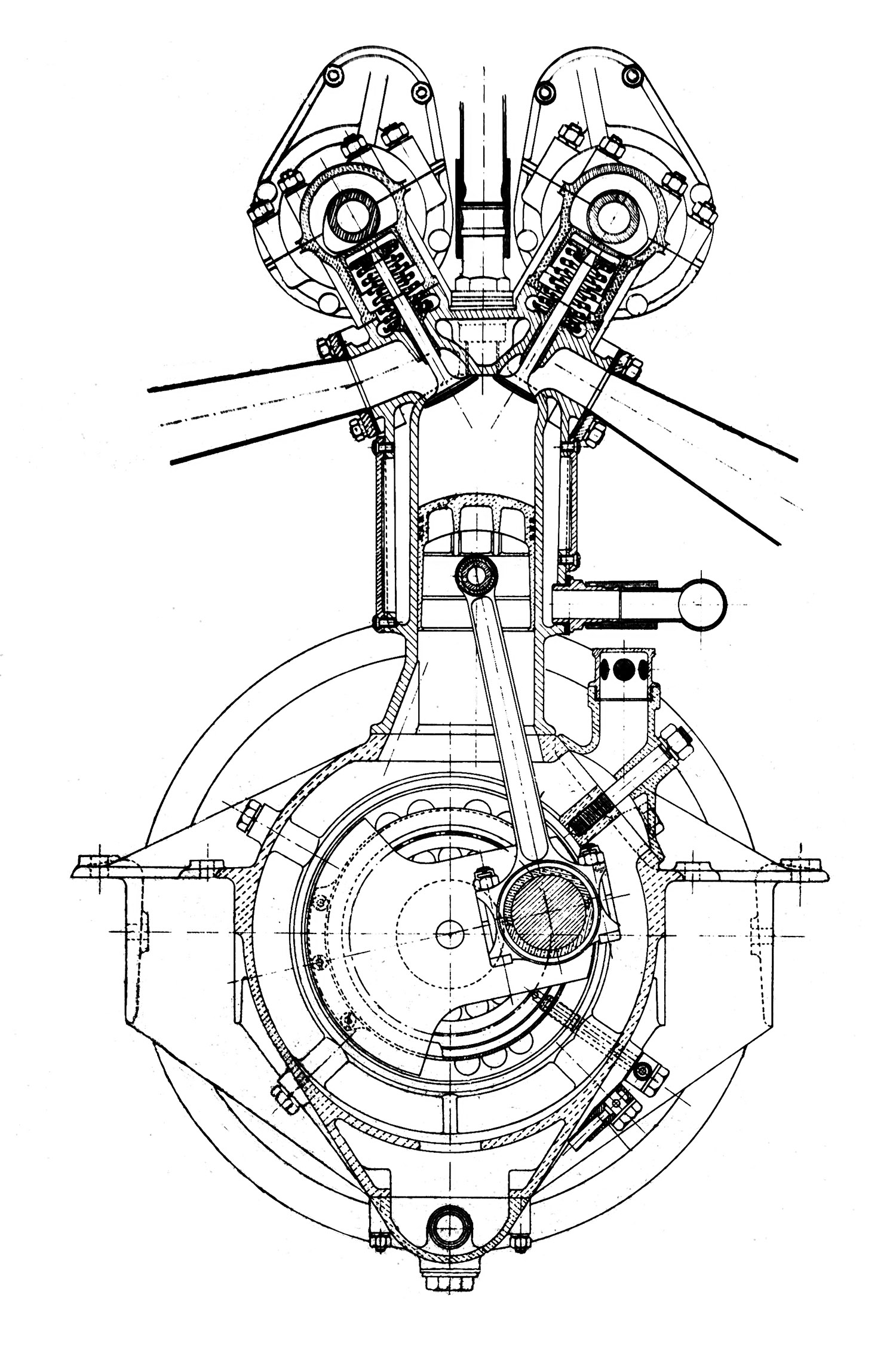
Much to be seen here in this drawing of the 3/8 LC. Narrow valve angle, Morin cup application, short piston skirts, offset crankcase, dry sump, one of the five ball bearing mains, sleeve bearing big ends. Note the crank diameter is a bit less than the main bearings as the unit was slid into the barrel crankcase.
Coatalen’s STD 1921 Sunbeam was a pure and simple rip off of the eight-cylinder Ballot but as Ludvigsen points out, the firm also experimented with a DOHC six, working the carburation problem out with Claudel expert Josef Christiaens and keeping the revs below 3000 to avoid vibrations. Coatalen also hired Henry to design a new four cylinder rather than an eight, for 1922.
Ballot, of course, had an unfair advantage as during the war Ernest Henry spent time designing the next generation of race engines and as the war ended was immediately employed by the erstwhile engine maker Ballot to create his pipe dream, and in less than 120 days. The Ballot team was ready for the Indy 500 in May of 1919 at a time when there was still no racing in Europe and a huge purse at Indy. Ballot had the designer at his peak and the money ($120,000 US) to do the job well in advance of anyone else, particularly in Europe. They would quickly catch up though, and the straight eight would reign until the mid-1930s when superseded by Mercedes V12s and V8s.
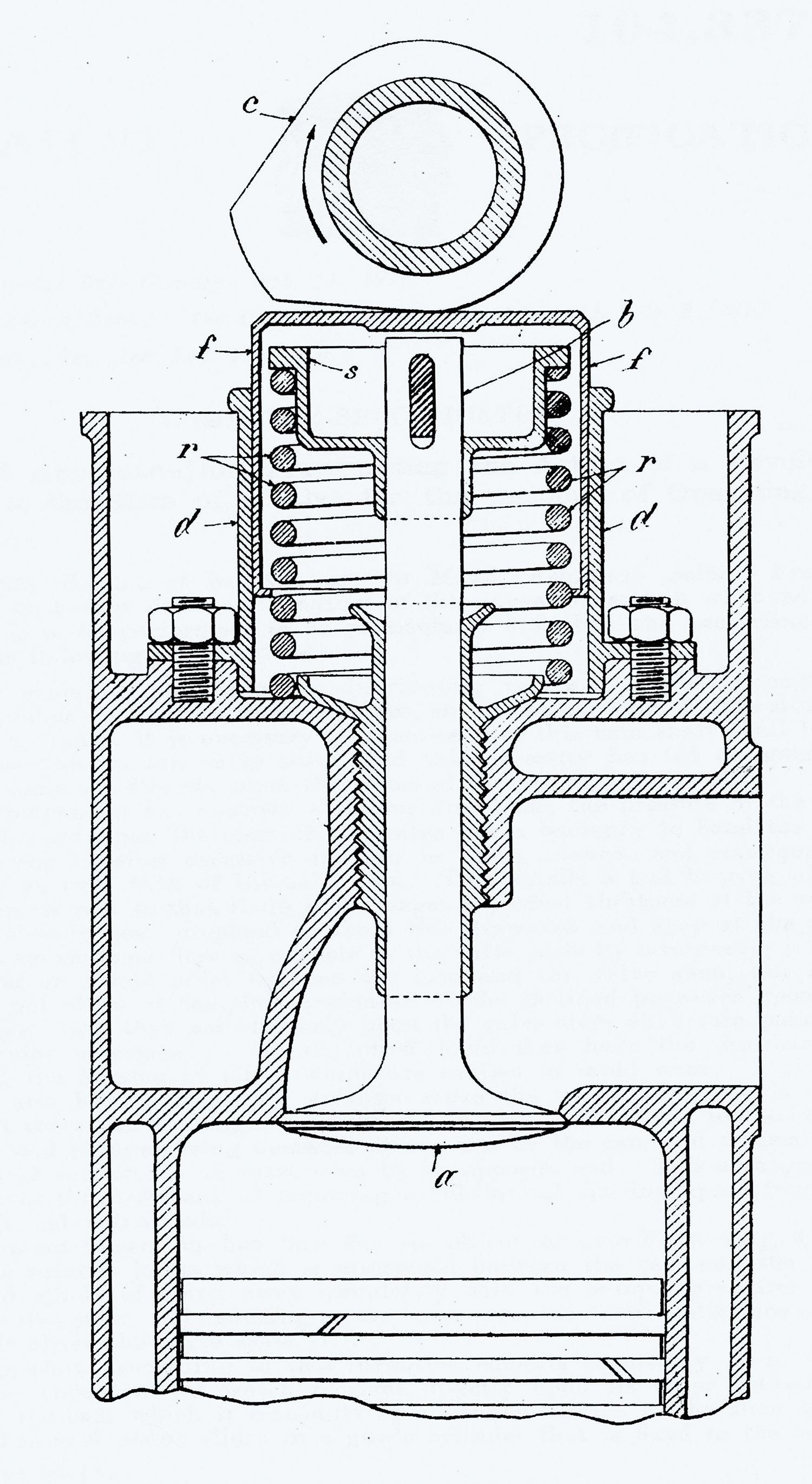
This will be familiar to anyone who has adjusted the valves on an Alfa or Ferrari or Jag. The inverted cup was invented by Frenchman Albert Morin in 1916 and used by Henry in the Ballot eights. It was kept top secret…Ballot kept the hoods locked at races.
In assessing the Ballot engine, Karl Ludvigsen comes up with more technical information about the design of Henry’s DOHC wonder than did Borgeson. Of note, the offset crankcase, the free-floating big end bearings, the unique oil scavenger/pump system, and to a lesser extent, the Morin cup type followers. Borgeson mentioned all of these features, but Ludvigsen takes the time and research to tell us why floating bearings might not have worked out as well as Henry hoped. Ditto the faddish offset crank, which after much ado, was found to have no particular advantage.
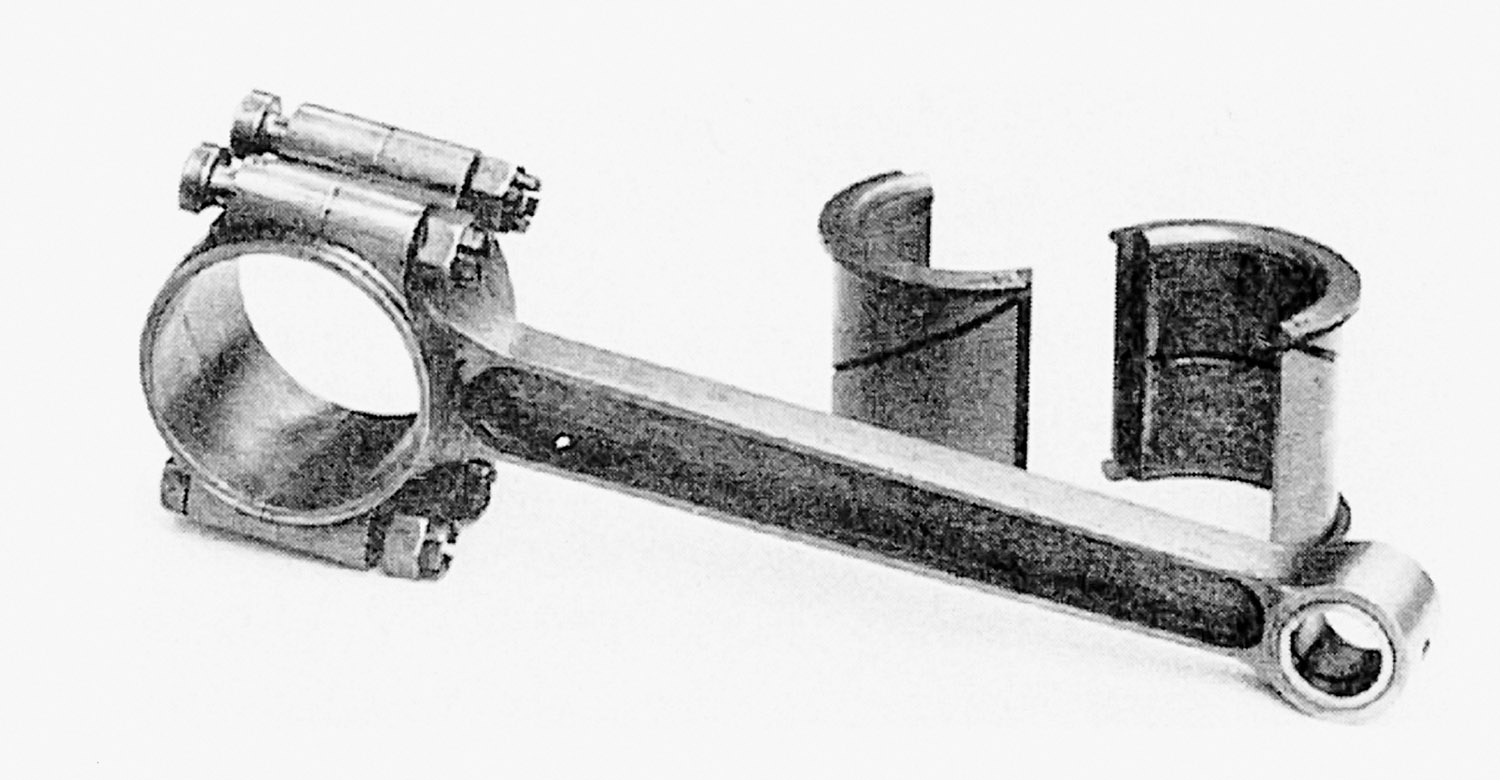
In today’s cars, a spun bearing on the big end means disaster. But floating bearings do just that…they have a bearing surface toward the rod and the crank on the other side.
* Borgeson page 74 The Classic Twin Cam Engine
Authors: Daniel Cabart and Gautam Sen, with David Burgess-Wise and Karl Ludvigsen
ISBN: 979-109026-303-9
Publication Date: Dalton Watson Fine Books, February 2019
Page Size: 219mm by 304mm 2 volumes, portrait
Hard, cover, with dust jackets and slipcase
Illustrations: 1650
Price: US$350
Call Dalton Watson: 1-847-945-0568 email info@daltonwatson.com
Click here to order your copy now!
Next: Ballot’s fantastic 2LS
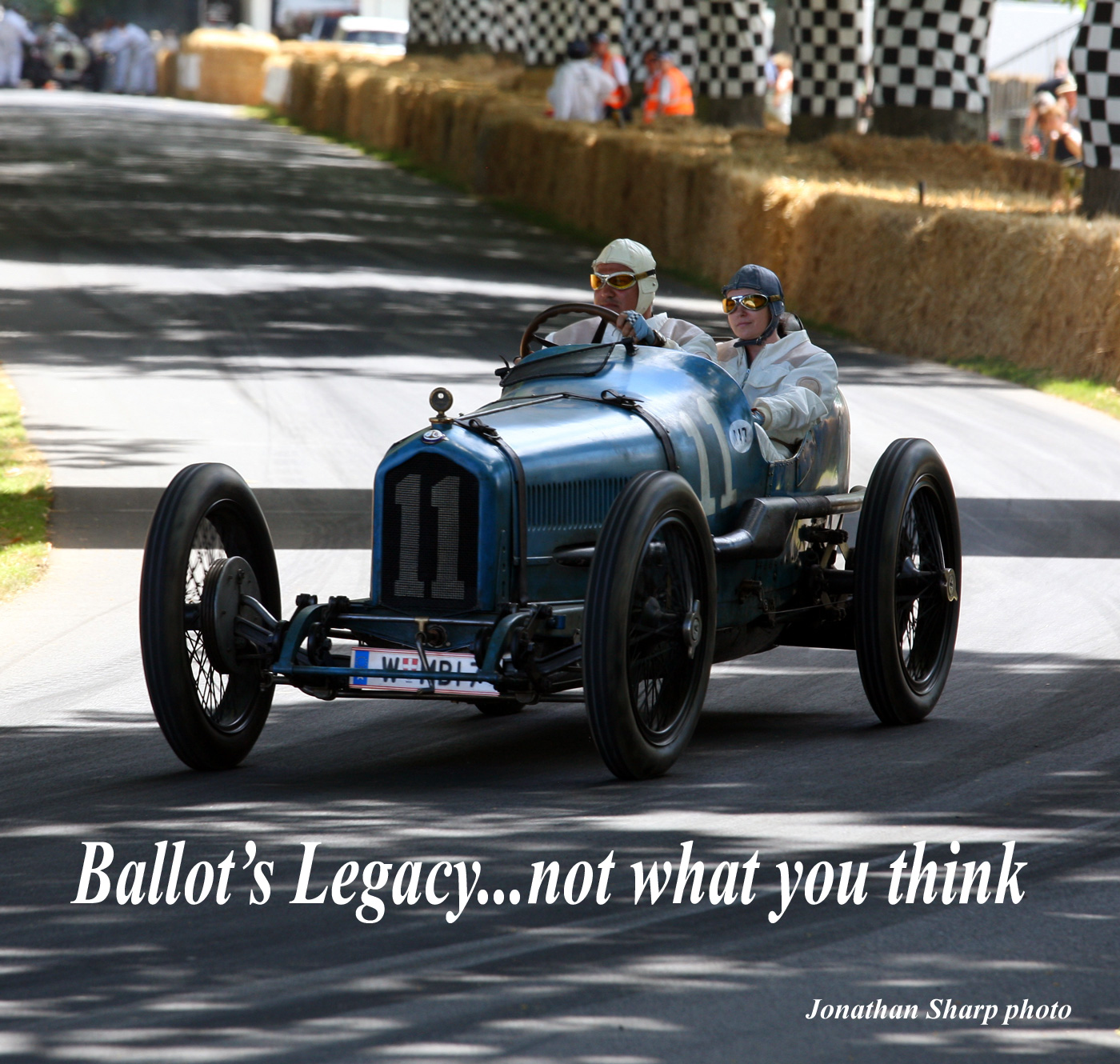
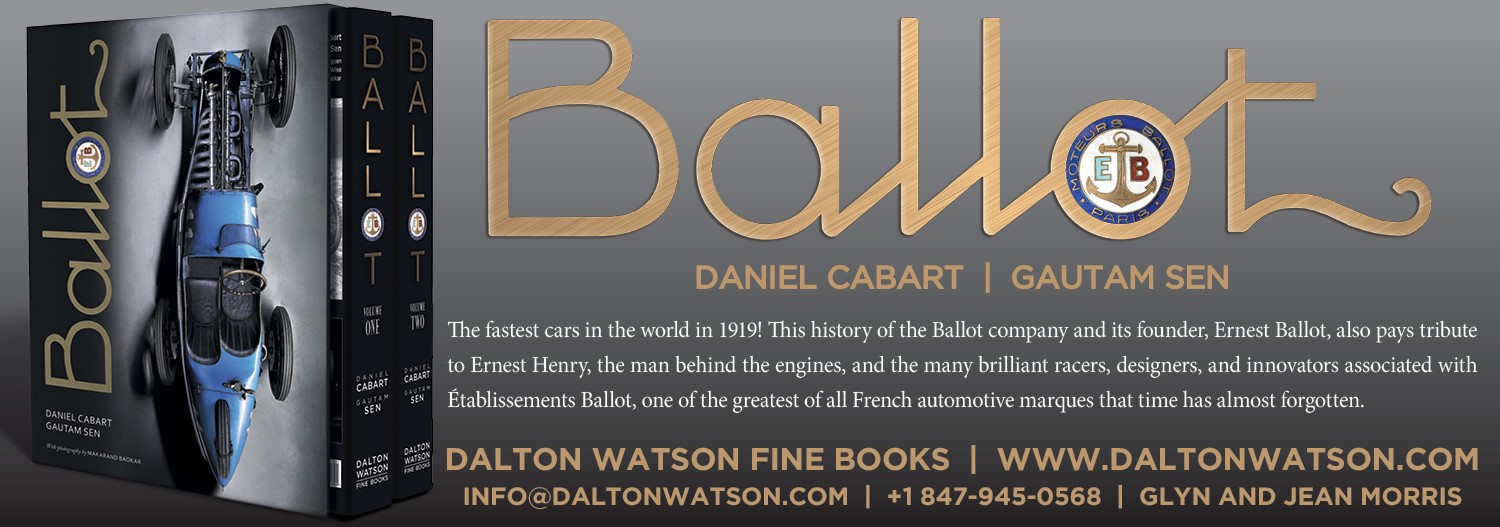
It’s interesting that Henry used the offset crankcase idea in this engine. I have copies of the crankcase design for the Type “JR” High Speed Motor (110 hp at 2,200 rpm) designed by the Wisconsin Motor Mfg. Co in 1911. They show the similar crankshaft offset from the cylinder center line of about 9/16″. These engines were used in a few American racing cars until the end of the 450 cubic inch formula in 1914. Bob Burman was a prominent Wisconsin customer during this period and with this engine. I have no idea who may have originated the offset crankshaft idea but I believe it continues to this day, at least for inline engines.
Ford used the full floating big end bearing idea in the early Ford V8 and Zephyr V12 engines. My father claimed that the Zephyr bearings were a constant source of trouble. I believe the early Cadillac V8 engine introduced in 1914 used the full floating bearing idea. It’s a shame if this idea may have contributed to some reliability issues for the Ballots with their higher revving engines.
In 1926 Stutz introduced the Vertical Eight engine in the new “Safety Stutz”. This inline eight cylinder engine used a version of the Morin cup valve follower with the overhead camshaft. It varied in the method of adjustment for valve clearance. This has always been an issue for production engines. Stutz, Jaguar, Crosley, Alfa and Fiat are some of the companies that have tried different designs to accomplish this using the basic Morin design.